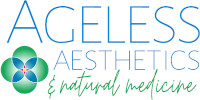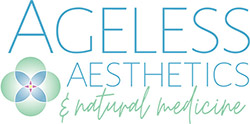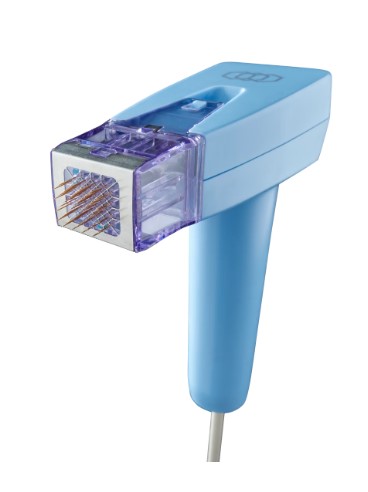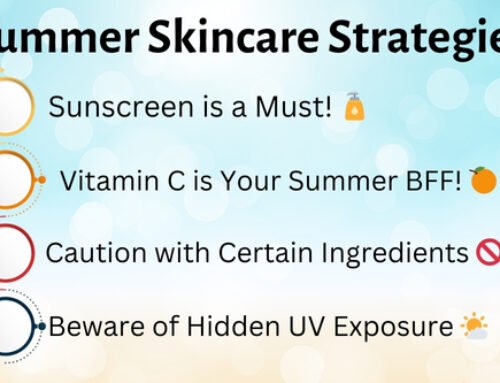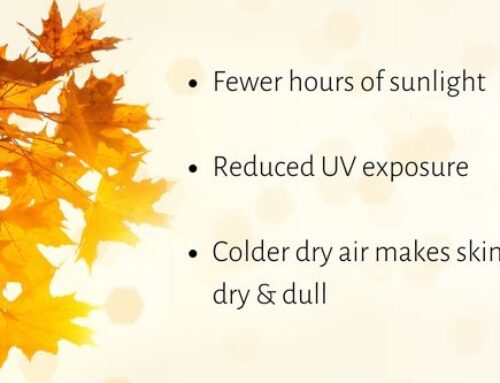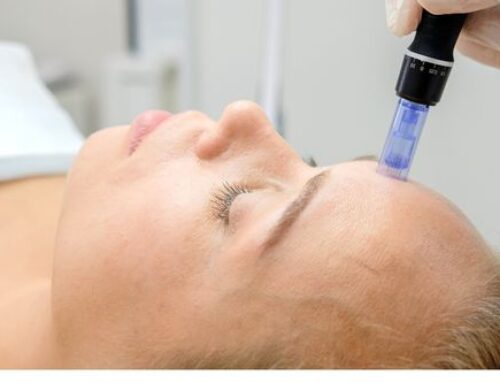Microneedling is a simple and easy procedure that can stimulate the body to create new collagen and elastin. The procedure is performed with a handheld device that uses tiny needles to create very small micro injuries in the skin. This triggers a natural healing response, leading to the development of new collagen and elastin, the two proteins that keep skin stretchy, elastic, and youthful. Read about microneedling basics in our September blog.
This month, we’ll go a little deeper. There are several different types of microneedling treatments:
-Hyaluronic Acid Needling (HA)
-Platelet Rich Plasma (PRP)
-Radiofrequency Microneedling (RF)
Let’s talk about some of the differences between these procedures.
Hyaluronic acid needling (HA)
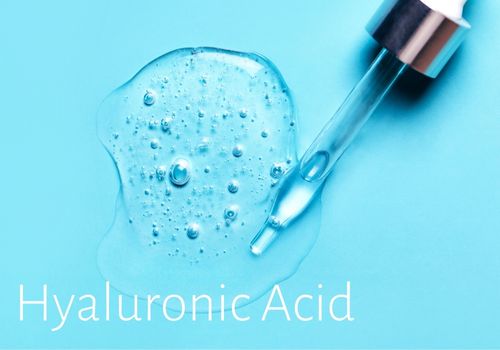 Hyaluronic acid needling (HA) is the most basic level of needling, and often the cheapest. Hyaluronic acid needling ranges from $200 to $300 per session. HA is used during microneedling for two reasons: it is a good opportunity to infuse the skin with HA, and it is used as a slip agent, which allows the device to glide smoothly across the skin without dragging.
Hyaluronic acid needling (HA) is the most basic level of needling, and often the cheapest. Hyaluronic acid needling ranges from $200 to $300 per session. HA is used during microneedling for two reasons: it is a good opportunity to infuse the skin with HA, and it is used as a slip agent, which allows the device to glide smoothly across the skin without dragging.
Our bodies naturally produce hyaluronic acid; in fact, more than 50% of the HA in the body is contained within the skin. Hyaluronic acid attracts water to it and it can bind 1000-4000 times its own weight in water, which makes it very hydrating!
Platelet Rich Plasma (PRP)
Platelet Rich Plasma (PRP) is the mid-level needling, often ranging from $600 to $650 per session. PRP is also known as the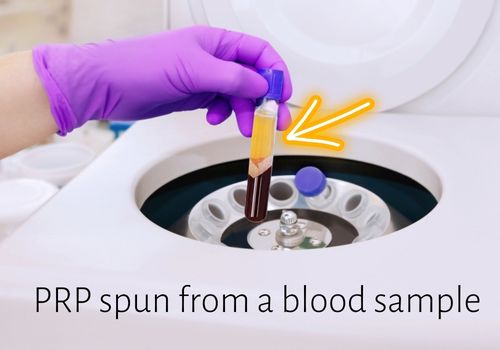 “Vampire Facial” made famous by Kim Kardashian.
“Vampire Facial” made famous by Kim Kardashian.
What makes PRP different is that it uses a component of the patient’s own blood, which means there is very little risk for allergic reaction. During a PRP session a sample of the patient’s blood is drawn and put into a centrifuge to separate the platelets from the rest of the blood. The platelets contain certain growth factors that can supercharge the effect of the treatment. These growth factors are specialized proteins that are tasked with turning ‘on’ or ‘off’ essential activities within the cell. The growth factors have many roles such as maintaining the skin’s youthful appearance by increasing cell renewal, cell defense, blood circulation and collagen and elastin production. (Read more about PRP here.)
When PRP is used for skin rejuvenation, it releases growth factors into the skin which expedite the body’s own repair process to stimulate new collagen and elastin. PRP really is a fascinating process with exponential growth in popularity over the last few decades for use in regenerative medicine, oral and maxillofacial surgeries, and even veterinary medicine. If you’d like to read in detail about the science behind PRP, here’s a great article: https://www.ncbi.nlm.nih.gov/pmc/articles/PMC5329835/
Radiofrequency ‘RF’ needling
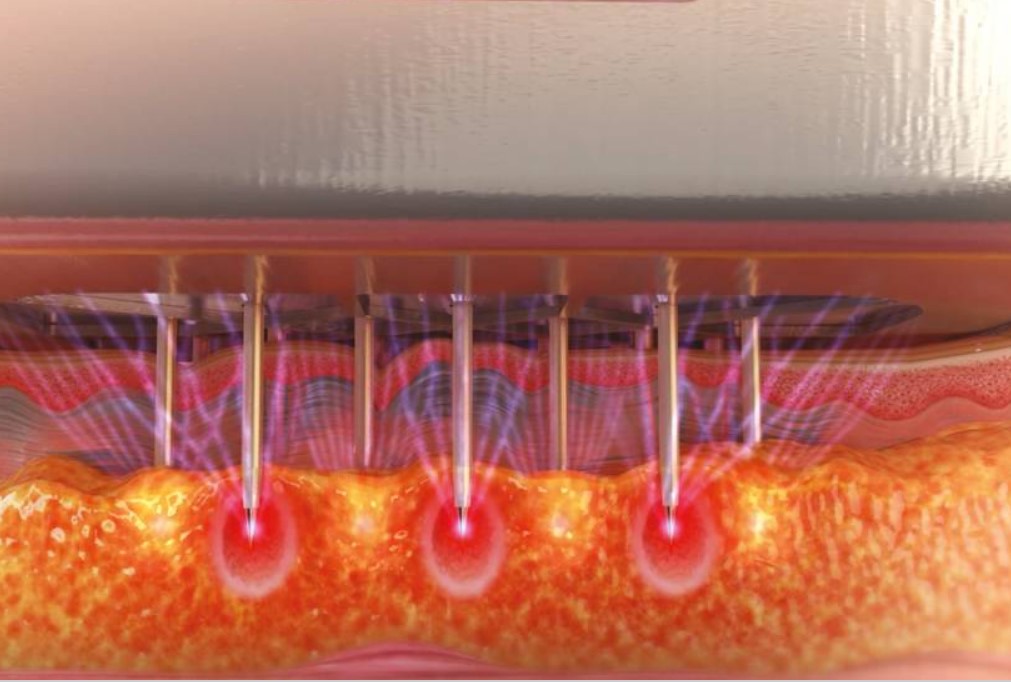 Radiofrequency ‘RF’ needling is considered ‘top-tier’, it is also the most expensive, starting at or around $1000 to $1200 per session, but this can vary wildly depending on the size of the treatment area, and the type of machine used. RF needling still uses small needles to puncture the skin, therefore it is still categorized as microneedling. The difference with RF needling is that as the needles penetrate the skin, they each emit a radio-frequency energy between each needle, which heats up the tissue under the skin.
Radiofrequency ‘RF’ needling is considered ‘top-tier’, it is also the most expensive, starting at or around $1000 to $1200 per session, but this can vary wildly depending on the size of the treatment area, and the type of machine used. RF needling still uses small needles to puncture the skin, therefore it is still categorized as microneedling. The difference with RF needling is that as the needles penetrate the skin, they each emit a radio-frequency energy between each needle, which heats up the tissue under the skin.
This process has the potential to melt fat for body contouring, such as fat under the chin and jowls, and to tighten the skin like shrink wrap. While RF needling is best suited to treat facial contouring and skin laxity, it can also be used all over the body (belly, arms, and back). The device settings, the depth of penetration, and level of heat must be tailored to the treatment outcomes. Using the device incorrectly can cause unwanted effects; for example, using the wrong settings can accidentally melt too much fat in the face and cause the face to look hollowed and sunken (and no one wants that!). Radiofrequency should only be used by trained professionals.
All of these types of needling work on the same premise, stimulating the body to heal itself. Each process is more supercharged than the previous. Hyaluronic acid needling still stimulates some platelet activity, but PRP directly infuses a large amount of platelet activity, and radiofrequency incorporates heat for additional contouring and tightening of the skin.
Want to know which level of microneedling is right for you? Schedule a consultation with me to learn more! [/fusion_text][/fusion_builder_column][/fusion_builder_row][/fusion_builder_container]
